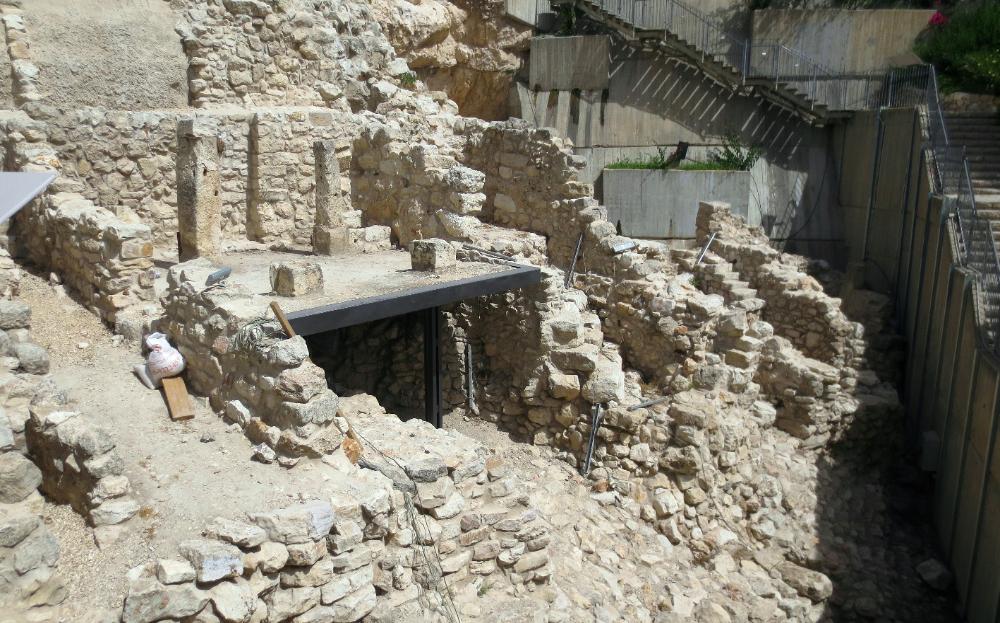
Where We Be
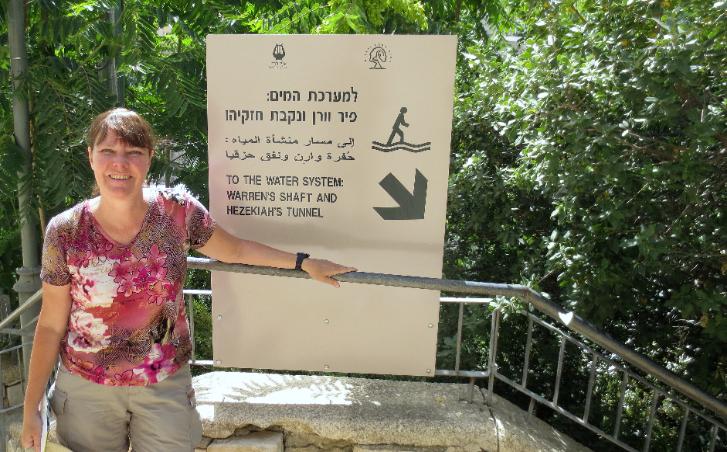
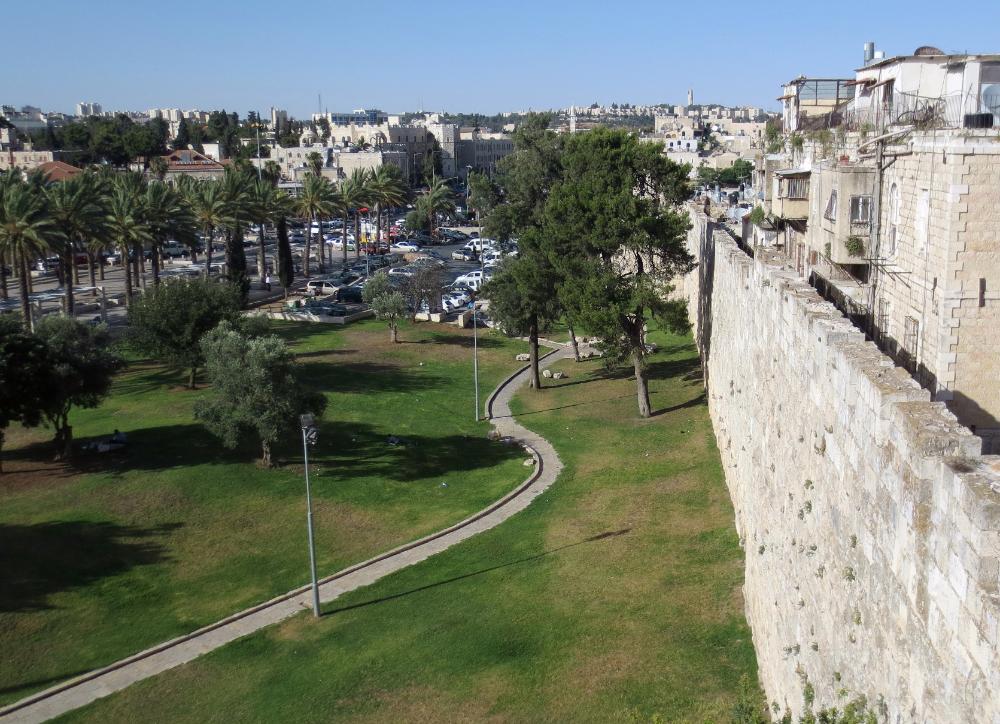
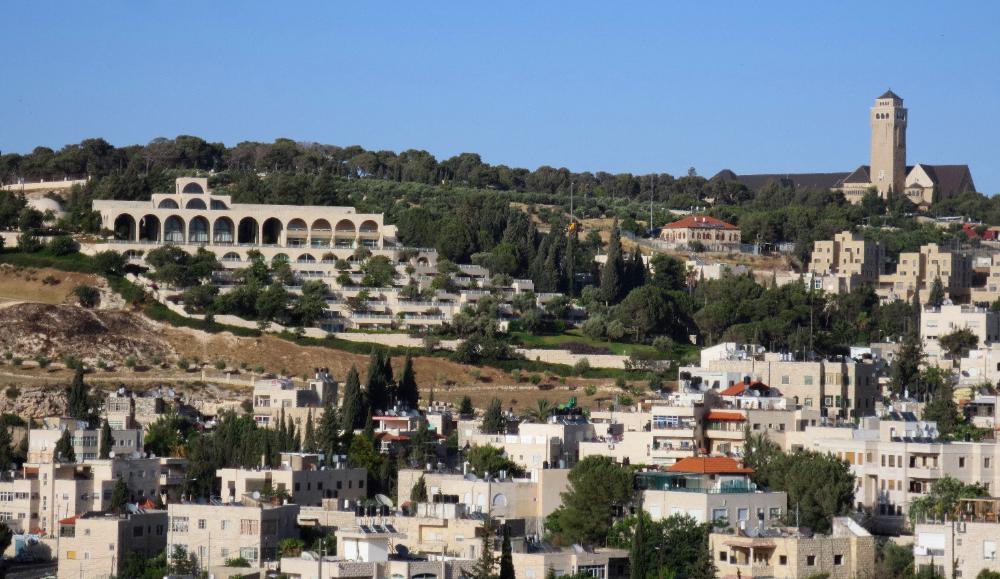
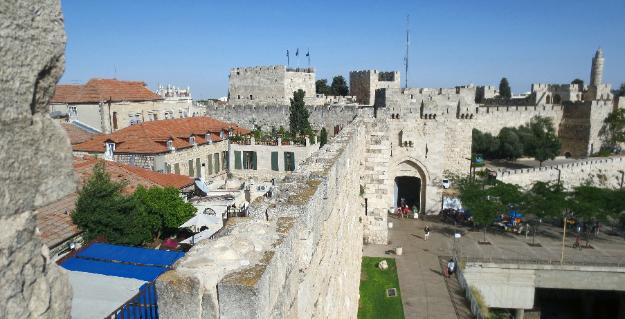
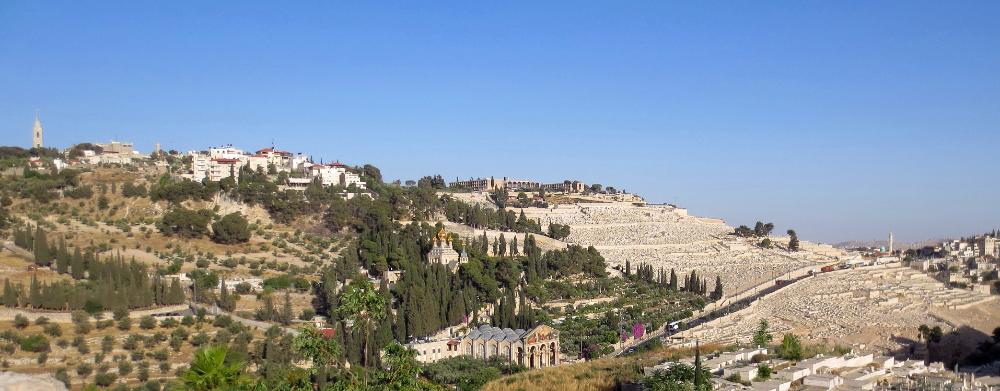
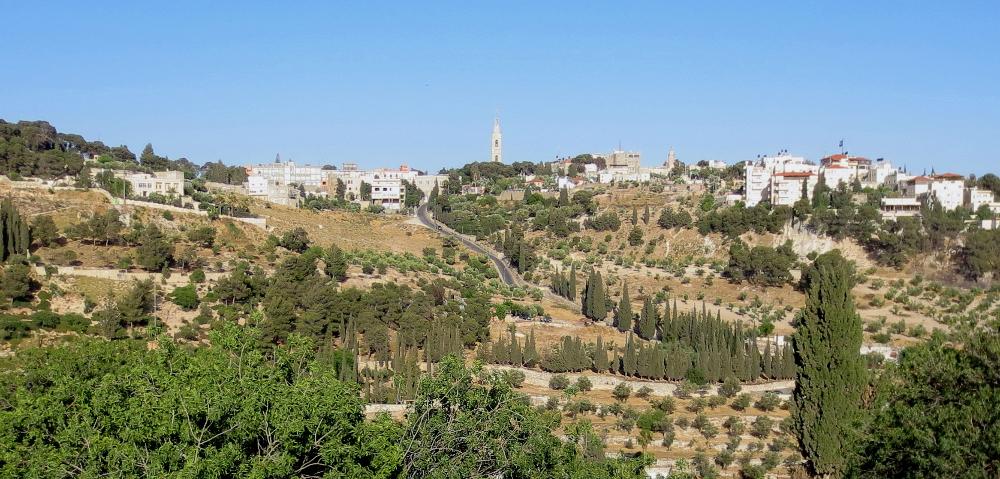
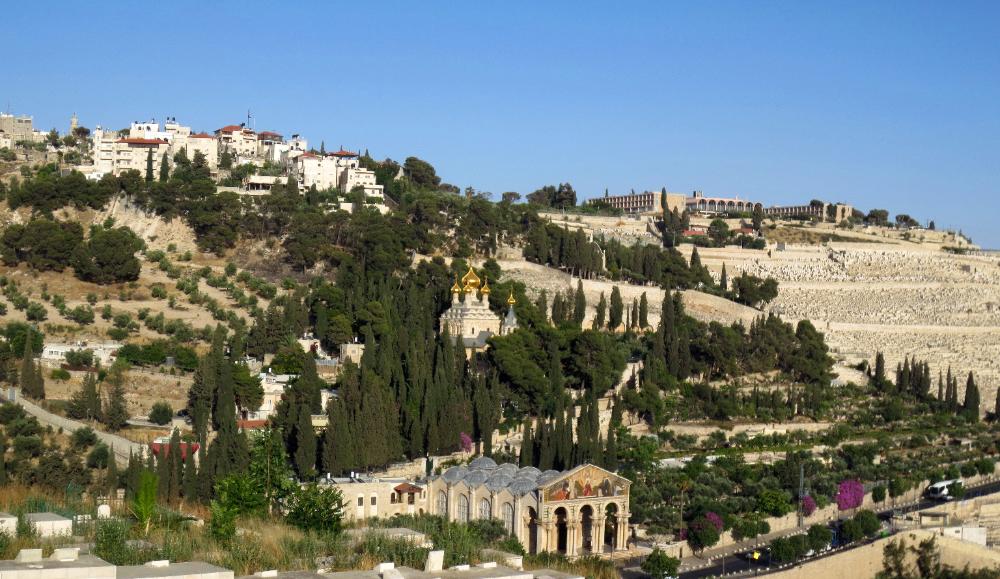
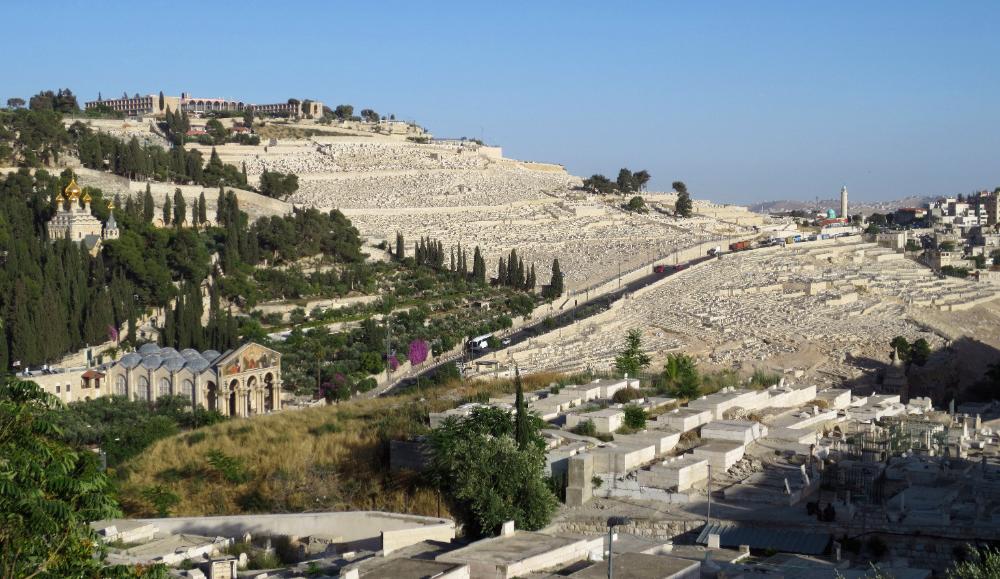
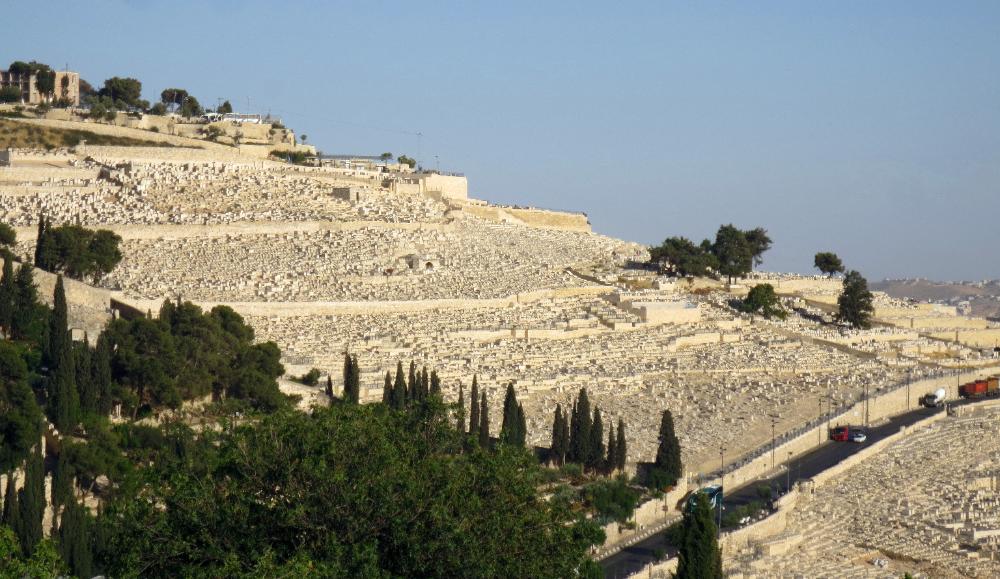
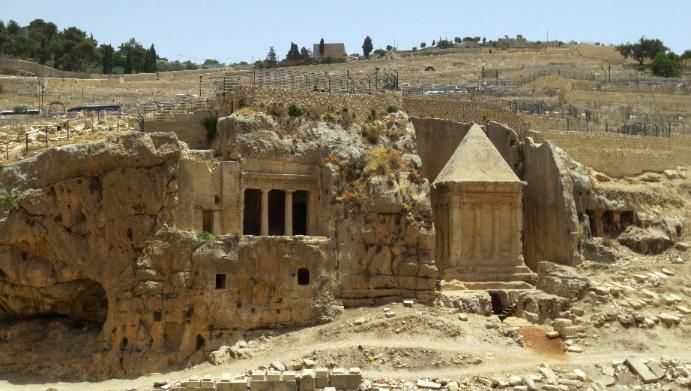
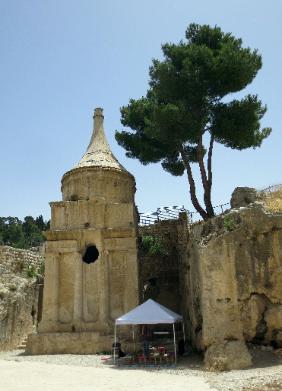
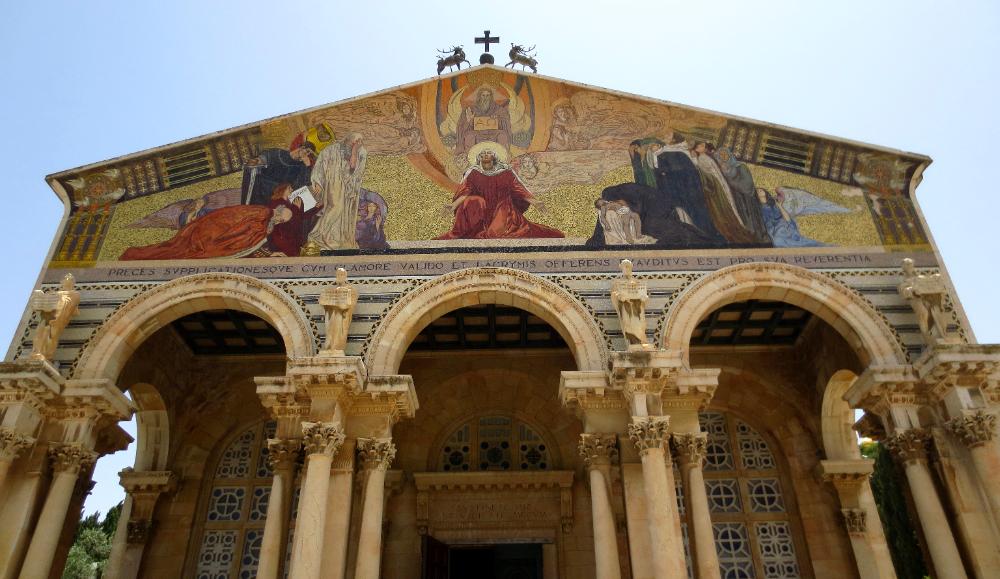
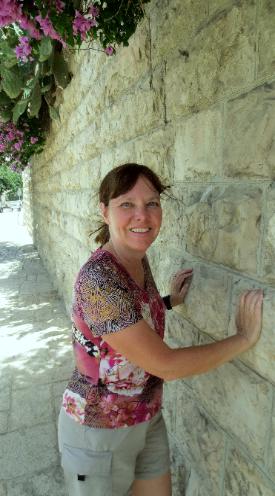
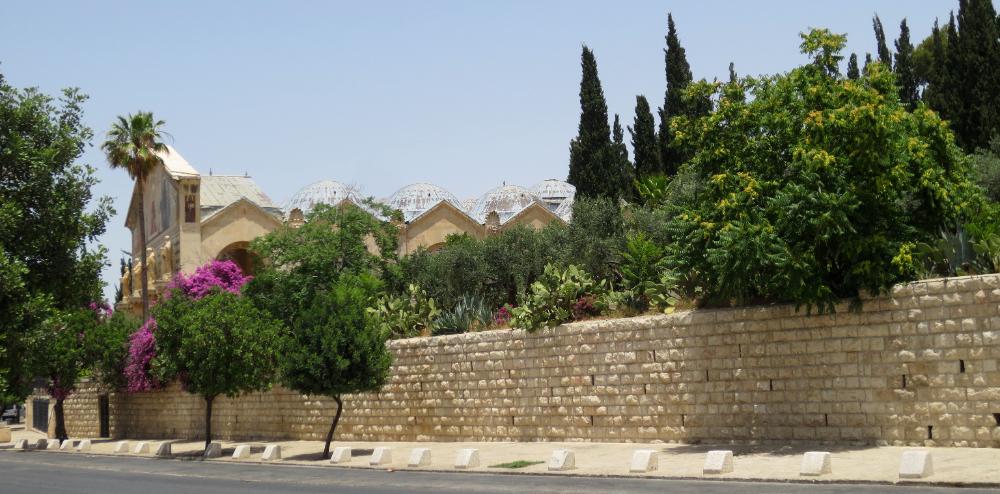
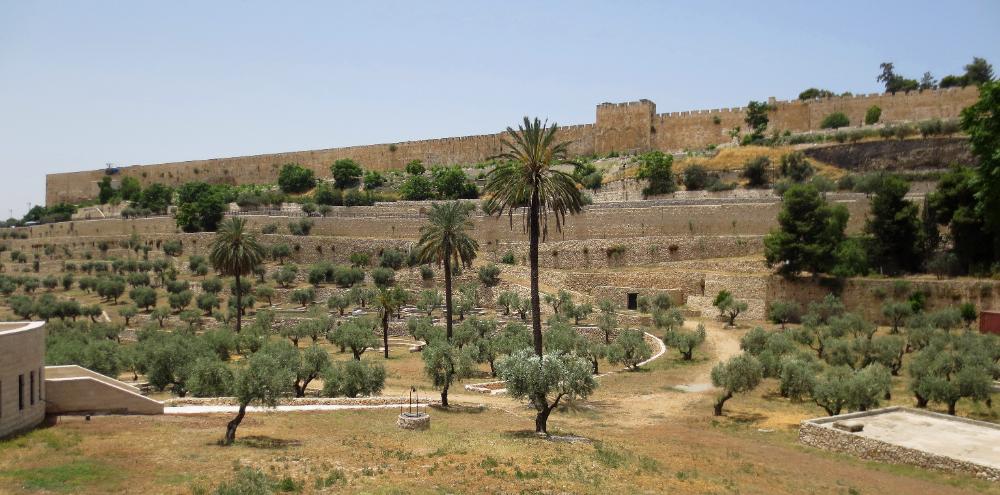
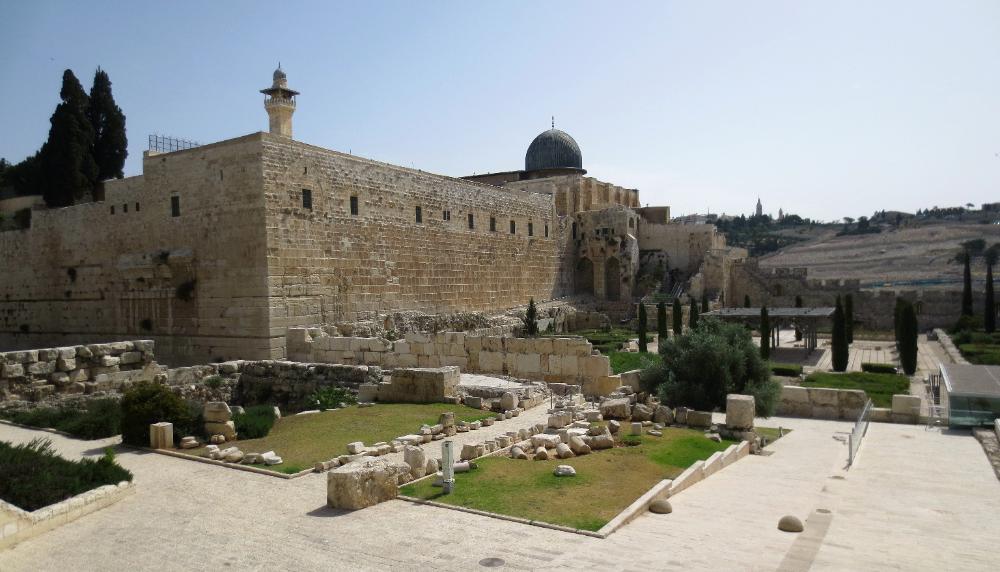
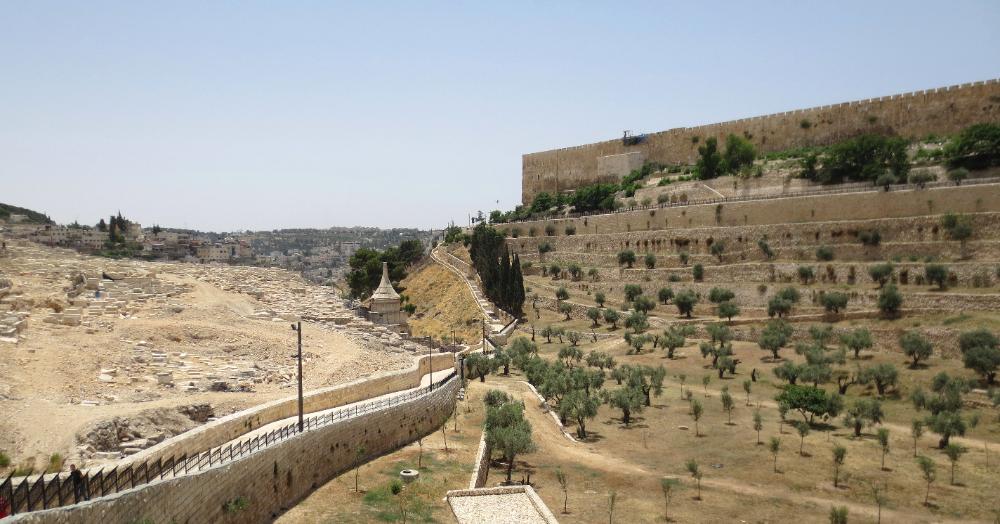

| The Ramparts Walk is a hidden treasure of the Old City -- don't miss it! |
| City Walls & Beyond -- Jerusalem, Israel |
Just outside the Old City walls are a number of
terrific attractions. We already mentioned the
Garden Tomb just outside Damascus Gate. Also
highly worthwhile is Hezekiah's Tunnel, a tunnel
system hewn through solid rock to provide the
City of David (the first Jerusalem) with a reliable
water source in times of seige. Built in the 8th
century BC, the curving tunnel is 1,750 ft (533 m)
long and has a gentle gradient so water flows
towards the city. Walking through this narrow,
pitch-black tunnel is quite the experience; you
slosh through ankle-deep water most of the way
but in spots it can be thigh-deep. If you're at all
claustrophobic, don't even think about doing
this. Be sure to bring a flashlight or headlamp.
When you visit Hezekiah's Tunnel (a short walk
beyond Dung Gate), you'll also be visiting the
original City of David, site of the first Jerusalem.
A lot of archaeology is going on in this vicinity
right now, and it's worth a look. Afterwards, you
can take a walk to the base of the Mount of
Olives to visit the Garden of Gethsemane and
see what is probably the largest cemetery you'll
ever lay eyes on, with some 150,000 graves. The
slopes of the Mount of Olives have been used
as a Jewish cemetery for over 3,000 years.
We would also highly recommend the Ramparts
Walk along the top of Jerusalem's walls. For 16
shekels (about $4) you can walk all the way from
Jaffa Gate to Lion's Gate for fantastic elevated
views of the Dome of the Rock, Mount of Olives,
and Muslim Quarter. For a separate fee you can
also walk in the other direction to Dung Gate. A
full loop isn't possible since the section of wall
near the Temple Mount is off limits. This hike is
best done in the early morning or late afternoon.
terrific attractions. We already mentioned the
Garden Tomb just outside Damascus Gate. Also
highly worthwhile is Hezekiah's Tunnel, a tunnel
system hewn through solid rock to provide the
City of David (the first Jerusalem) with a reliable
water source in times of seige. Built in the 8th
century BC, the curving tunnel is 1,750 ft (533 m)
long and has a gentle gradient so water flows
towards the city. Walking through this narrow,
pitch-black tunnel is quite the experience; you
slosh through ankle-deep water most of the way
but in spots it can be thigh-deep. If you're at all
claustrophobic, don't even think about doing
this. Be sure to bring a flashlight or headlamp.
When you visit Hezekiah's Tunnel (a short walk
beyond Dung Gate), you'll also be visiting the
original City of David, site of the first Jerusalem.
A lot of archaeology is going on in this vicinity
right now, and it's worth a look. Afterwards, you
can take a walk to the base of the Mount of
Olives to visit the Garden of Gethsemane and
see what is probably the largest cemetery you'll
ever lay eyes on, with some 150,000 graves. The
slopes of the Mount of Olives have been used
as a Jewish cemetery for over 3,000 years.
We would also highly recommend the Ramparts
Walk along the top of Jerusalem's walls. For 16
shekels (about $4) you can walk all the way from
Jaffa Gate to Lion's Gate for fantastic elevated
views of the Dome of the Rock, Mount of Olives,
and Muslim Quarter. For a separate fee you can
also walk in the other direction to Dung Gate. A
full loop isn't possible since the section of wall
near the Temple Mount is off limits. This hike is
best done in the early morning or late afternoon.
| A walk to the base of the Mount of Olives is relatively easy and offers close-up views along the way of some impressive mausoleums. From left to right are the tombs of Benei Hazir, Zechariah, and Absalom. |
| The Church of All Nations marks the spot where Jesus prayed with his disciples the night before his crucifixion |
| The church and gardens were closed when we arrived, but we liked the gate anyway! Robin stands as close as she can get to the Garden of Gethsemane. |
| Here you can see over the wall into the Garden of Gethsemane with its olive trees |
| The walk back gives you some terrific views of the Old City walls |
| Here you can see the pathway winding up to the Old City and, to the left, Absalom's Tomb |
| An amazing amount of archaeology has gone on -- and continues to go on -- just outside the walls |
| Jerusalem Archaeological Park lets you explore 5,000 years of history right outside the Old City walls at the foot of the Temple Mount |
| Perhaps the best views of all are of the Mount of Olives. The closer you get to Lion's Gate, the better the views become. |
| At the very top of the Mount of Olives is the steeple of the Russian Orthodox Church of the Ascension, one of Jerusalem's most prominent landmarks |
| At the base of the Mount of Olives you can see the Garden of Gethsemane, just to the right of the Church of All Nations. Higher up is the Russian Orthodox Church of Mary Magdalene with its golden onion domes. |
| On Mount Scopus you can see the distinctive multiple arches of the BYU Jerusalem Center. The belltower of the Augusta Victoria hospital-church complex is visible to the right. Hebrew University, one of the top universities in Israel, dominates its lower slopes. |
| The cemetery has been in use for over 3,000 years. Many Jews want to be buried here because, according to Jewish tradition, when the Messiah comes, the resurrection of the dead will begin here. |
| One of the most remarkable sights in all of Jerusalem is the enormous Jewish cemetery on the slopes of the Mount of Olives, with some 150,000 graves |
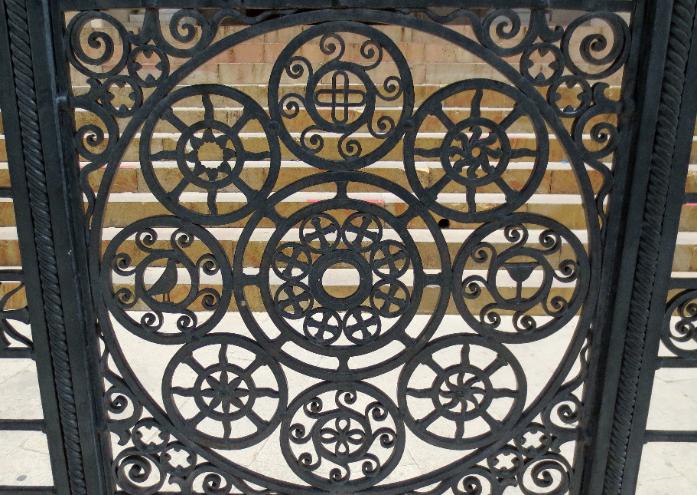
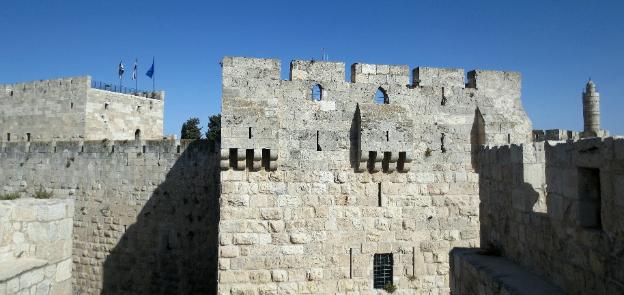
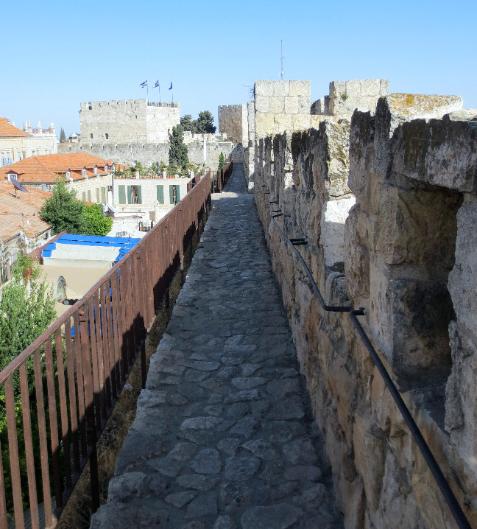
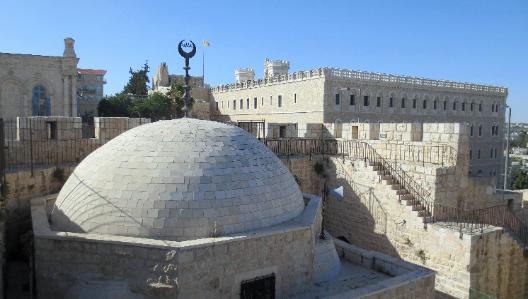
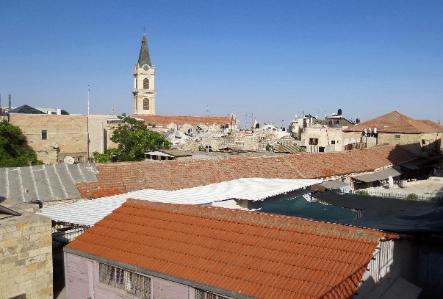

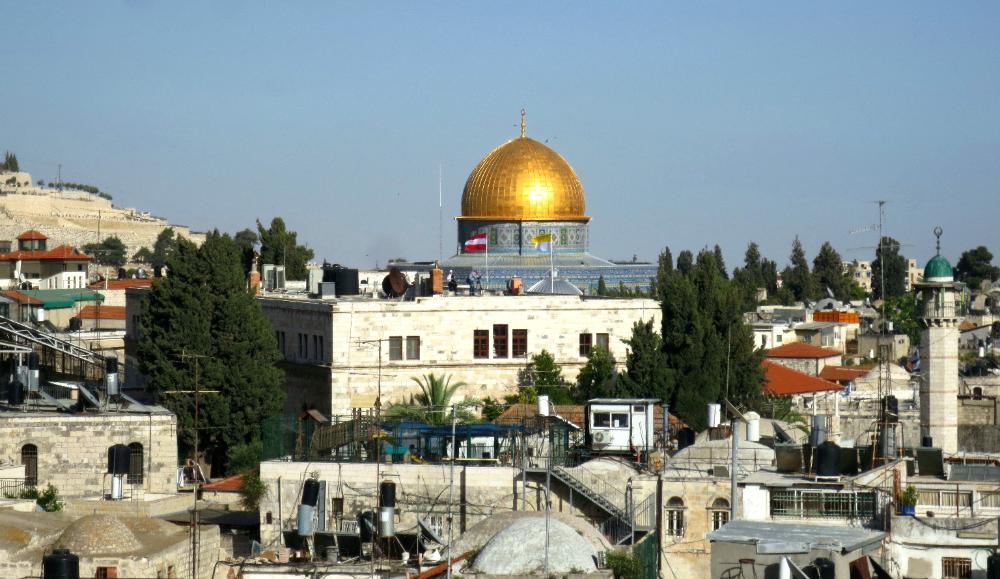
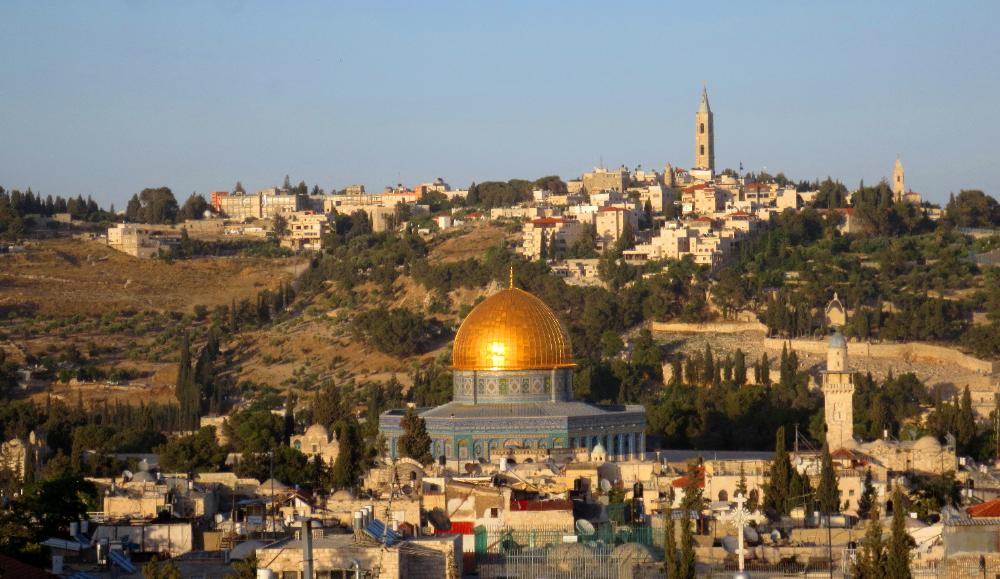
| You can begin your walk either at the Tower of David near Jaffa Gate or at Damascus Gate |
| The Ramparts Walk starts out flat, as you can see here, but there is quite a bit of stair climbing as you get closer to Lion's Gate at the far end |
| We saw parts of the Muslim and Christian Quarters that are hidden away otherwise |
| You get elevated views looking both into the Old City and beyond the city walls |
| If you walk the ramparts to Lion's Gate, you'll be close to the Dome of the Rock and Muslim homes, markets, schools, and playgrounds |
| We'll leave you with one last image of the Dome of the Rock, with the Mount of Olives rising up behind it. This photo was taken towards sunset from the rooftop of the Petra Hostel (on David Street near Jaffa Gate). |
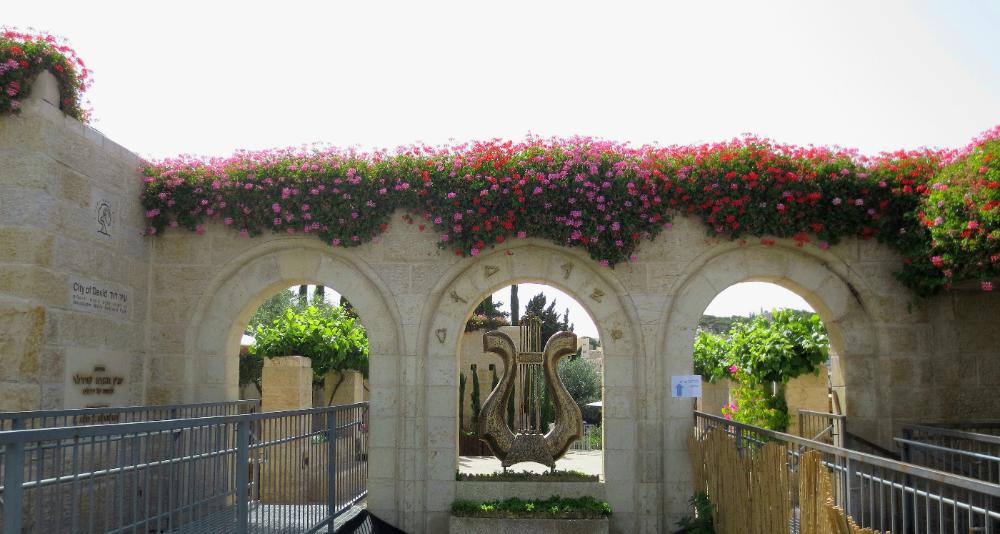
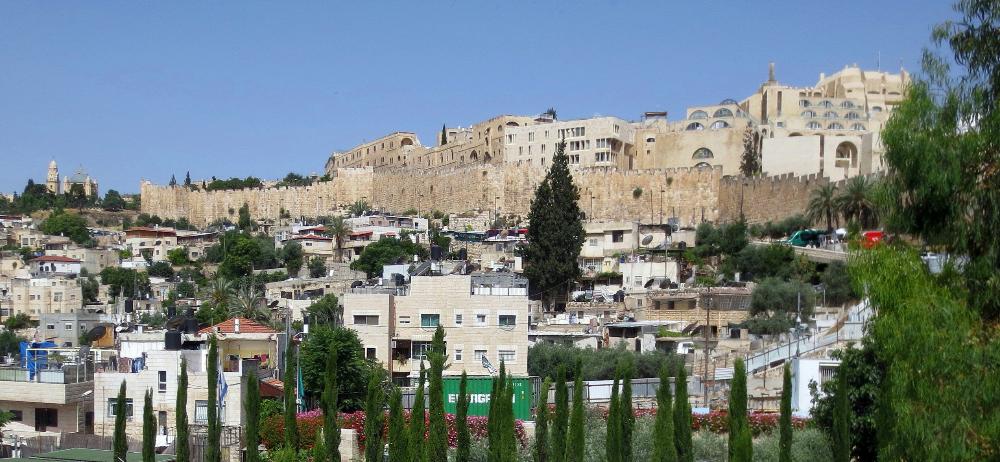
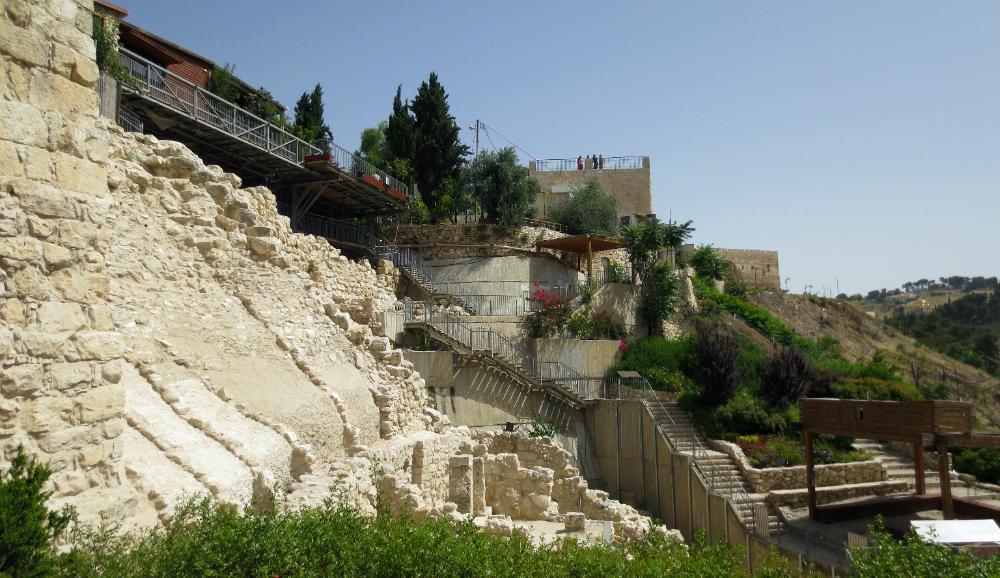
| A short walk beyond Dung Gate is the City of David -- the original Jerusalem. Here is where King David conquered Jerusalem from the Jebusites some 3,000 years ago and established it as his royal city. |
| A look back at the city walls gives you an idea of the distance between the City of David and what we now call the Old City. At the far left of the photo is Dormition Abbey just outside Zion Gate. |
| Over the centuries, the location of the original Jerusalem was forgotten. It wasn't until the late 1800s when archaeological excavations began that this hill was identified as being the ancient core of Jerusalem. Many of the books of the Old Testament were written right here. |
| This site is now said to be the most excavated mound in the history of archaeology! Here we're looking at the residential quarters for King David's royal officials. The structure with the modern supports is the two-story House of Ahiel. |
| The entry to Hezekiah's Tunnel is inside the City of David entrance. As you can see from the diagram, the water level gets quite high in one or two places. |
| You descend a steep flight of stairs down, down, down before leveling out. This tunnel hewn out of solid rock leads for an astonishing distance -- the length of nearly six football fields -- and has an average slope of just 0.06%, a pretty amazing feat of ancient engineering. |
| The tunnel is pitch-black, narrow, and requires you to bend over in places to avoid hitting your head. This is a one-of-a-kind experience not to be missed -- as long as you're not claustrophobic. Otherwise, forget it! |
| The ancient Siloam inscription at the far end of the tunnel indicates that two teams dug from opposite ends and met in the middle, probably guided by the sound of hammers from above. The tunnel emerges near Gihon Spring -- early Jerusalem's main water source. |
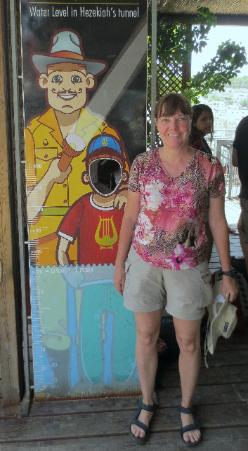
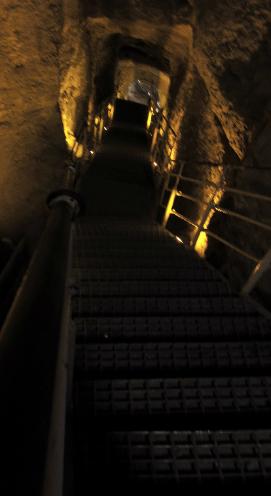
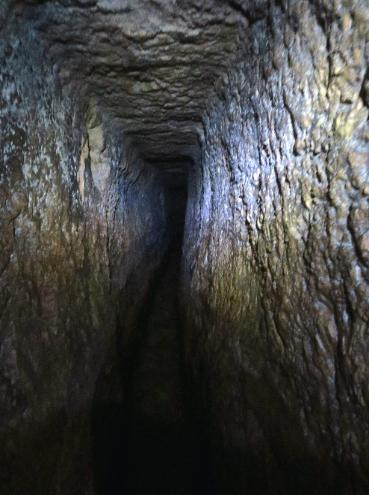
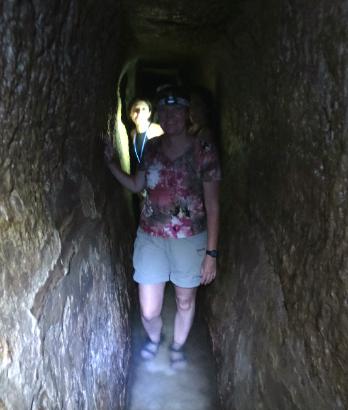
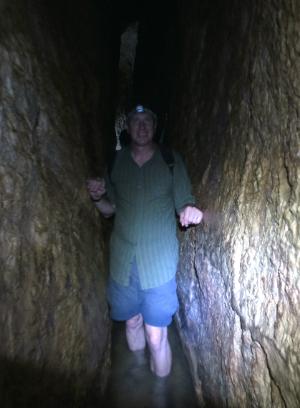
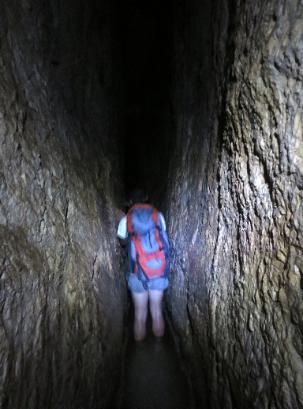
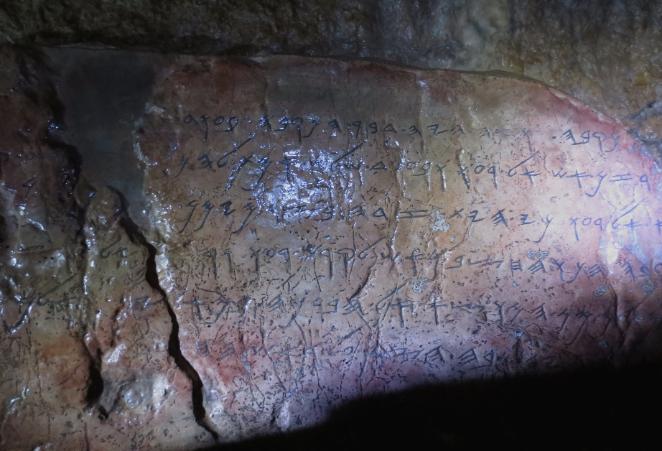
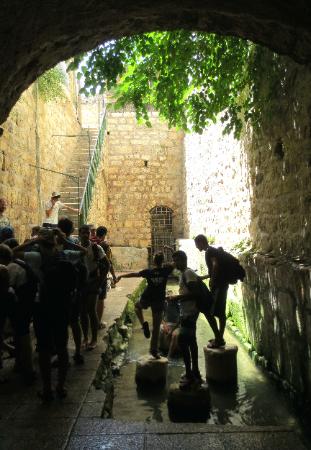
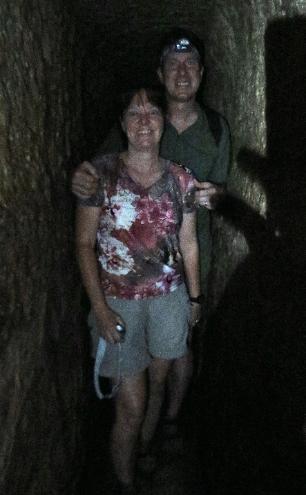
| Ramparts Walk |
| Mount of Olives Walk |
| City of David |
| Hezekiah's Tunnel |
| Roof View from Petra Hostel |
